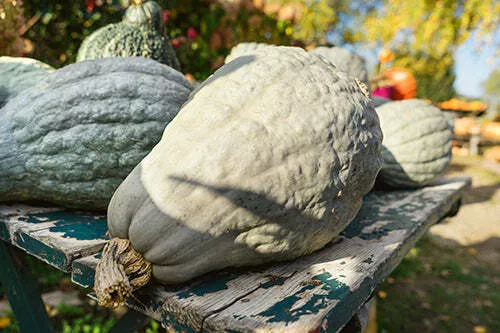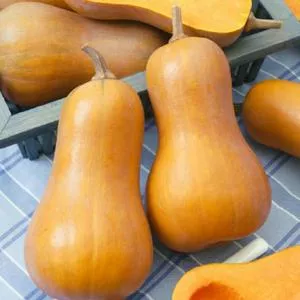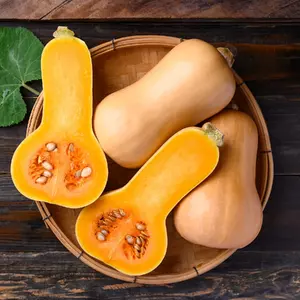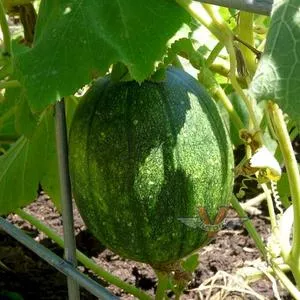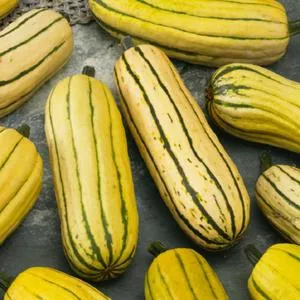Hubbard, Blue - Winter Squash
Price: $3.45
SKU: 3370051'Blue Hubbard' was introduced in 1909 by James J. H. Gregory who called it 'Symmes Blue Hubbard' in honor of a longtime seed grower of their from Cliftondale, Massachusetts by the name of S. S. Symmes. It is presumed that it was developed from a cross between the original 'Hubbard Squash' and either' Middleton Blue' or 'Marblehead'.
Here in the Maritime Northwest, it is common to plant seeds in hills. The hills are created by mounding up the soil about four to six inches high, twenty-four inches across at the base and flattened on the top. This allows the soil to be better warmed by the sun and provides better protection from heavy rain.
Sow five to six seeds, one inch deep, in hills or rows. Spacing is dependent on plant type. Vining varieties should be spaced on six foot centers while bush-types at twenty-four to thirty inches apart. When seeds germinate, cut off all but the strongest three or four seedlings.
When laying out your garden, remember to consider the growing habits of the varieties that you are planting. Some bush-types are compact while some vining types require a tremendous amount of space. Harvest time will also vary by type.
- "Vegetables of New York: The Cucurbits," New York Agricultural Experiment Station, 1935, pgs. 17.
- "List of American Varieties of Vegetables for the Years 1901 and 1902," by W. W. Tracy, Jr., USDA, 1903

